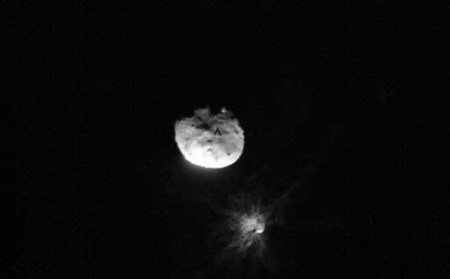A small asteroid, named 2024 PT5, will briefly become Earth’s second moon from September 29 to November 25. During this period, the asteroid will orbit the planet before returning to its original trajectory in space. The American Astronomical Society recently revealed this phenomenon in their research notes.
However, unlike the moon, this mini-moon won’t be visible to the naked eye due to its small size and dull appearance. Even using binoculars or a home telescope won’t provide a clear view. Dr. Jennifer Millard, an astronomer and host of the Awesome Astronomy podcast, explained to the BBC, “Professional telescopes will be able to capture it, so expect plenty of detailed images online showing this tiny object moving quickly across the sky.”
NASA’s Atlas Spots the Mini-Moon
The asteroid, which measures around 33 feet in width, was first detected by NASA’s Asteroid Terrestrial-Impact Last Alert System (Atlas) on August 7. It originates from the Arjuna asteroid belt, a collection of space rocks orbiting the Sun near Earth. The asteroid will stay temporarily in Earth’s orbit for about two months before departing on November 25.
According to Dr. Millard, the asteroid’s journey won’t involve a complete orbit of Earth. Instead, Earth’s gravity will slightly alter its path before it continues its journey through space. These asteroids, which typically pass Earth at around 2.8 million miles (4.5 million kilometers), can be momentarily captured by Earth’s gravity if they travel at slower speeds—like the roughly 22,000 mph (3,540 km/h) of 2024 PT5.
“This event highlights just how active and dynamic our solar system is, and how much remains undiscovered,” Dr. Millard added. “It’s important for us to continually monitor the sky for new objects, as there are tens of thousands, if not hundreds of thousands, of unknown celestial bodies out there.”
Not the First Mini-Moon
This isn’t the first time Earth has temporarily captured a mini-moon. Some of these asteroids even return for repeat appearances. For example, 2022 NX1 became a brief companion to Earth in both 1981 and 2022. Scientists predict that asteroid 2024 PT5 will return to orbit Earth once again in 2055.

